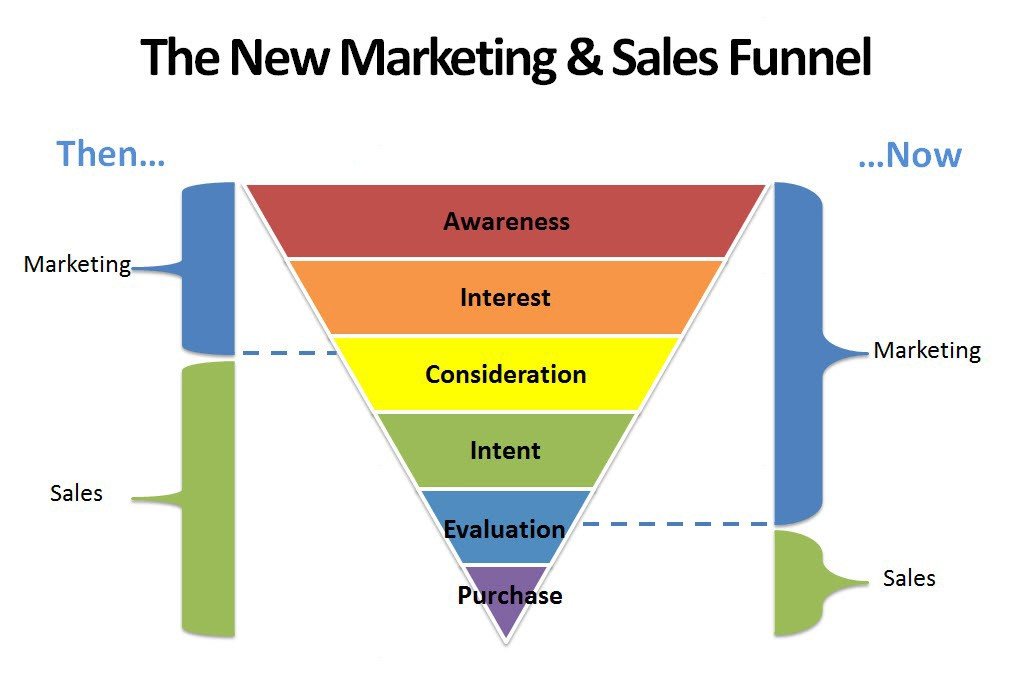When we talk to high ticket B2B payment companies with large sales teams, they are often sceptical of the power of content.
They don’t believe that CTOs, founders and product managers are doing research on Google, scrolling through LinkedIn or reading blog posts. They don’t believe that content could ever replace a sales team or make a significant difference to their lead to close conversion rate.
If that’s what you believe, then this story is for you. In this case study, you’ll see how Tilled, a B2B payment facilitation company, got 75% of their leads inbound their first year, with an astounding 59% deal to close rate. All with content.
In this story, we want to demonstrate the power of content and marketing, and how a B2B payments company – operating in an industry where consultative sales are the norm – relies primarily on marketing to close deals.
Note: looking to work with a content partner that could help you implement content to help with sales? Read how we help B2B companies acquire customers with content.
How Tilled was born
Caleb Avery, founder of Tilled, started out his career as a 19 year old selling payment products to small business owners door to door.
His growing payments knowledge often resulted in him being brought in on consulting projects for vertical-specific software companies, such as dental software or golf course management platforms. These companies wanted to figure out how to monetise the payments going through their platform.
The solutions he was recommending offered antiquated technology and were pretty clunky. Caleb got tired of recommending suboptimal solutions, so he decided to build his own. And so Tilled was born.
It’s now been 4 years, and Tilled is a self-described “PayFac-as-a-Service”. Tilled allows B2B software companies to enjoy all of the benefits of becoming a payment facilitator and easily monetise payments – without any of the upfront investment or ongoing overheads. Tilled allows software companies to set up recurring payments, hosted payment forms, split payments and more.
It’s a relatively competitive market, with quite a few well known payment facilitators already well established in the US. And yet, Tilled has now signed 71 software companies with the overwhelming majority of those coming inbound.
Let’s find out how they do it.
The results 4 years later: 54% of Tilled’s leads are inbound
Since founding Tilled, Caleb tells us their lead flow is over 54% inbound organic. Their close rate is a mind boggling 59%. So far this year, Tilled has won 158 deals.
Caleb attributes the majority of that success to content. When a prospect jumps on a sales call with them, they are so well educated on how Tilled works, how it’s different to other solutions, the features and benefits and the “why” behind the product, that there is practically no “selling” per se. Instead, it’s a conversation about how to get started.
But content didn’t just help with deal flow and acquiring customers. It also helped drastically reduce recruiting costs. Tilled regularly writes about their culture and what it’s like to be an employee at the company. To date, there are currently 63 people on the team, and they haven’t spent a single penny on recruiters. In fact, their average time to hire is 27 days.
It’s an incredible success story, and adequately illustrates the power of content as well as the clear difference in how people buy today – even in B2B, high-ticket consultative selling.
Tilled’s story clearly shows that more buyers prefer doing their own research before reaching out to a salesperson. And the companies that are facilitating that, rather than fighting it, are coming out ahead with higher close rates and low recruiting costs.
You’ll want to read how they do it.
How Tilled got started with content
Caleb started creating content and marketing Tilled a full 12 months before launching the product. Whereas most founders wait till the product is done before even beginning to think about the go-to-market, Caleb wanted to start early.
But Caleb started out his career as a door to door salesperson – digital content is almost the antithesis to that. So why did they decide to start with content?
Why content?
Caleb has a background in door to door sales, so when it was time to set up the go to market strategy, content would be the least obvious choice.
And that’s the thing: Caleb didn’t want to do content. His initial strategy was actually to go out and tell people at trade shows and events and do what he does best: speak to people face to face. But something happened that few people were prepared for: Covid.
With the lockdown, all trade shows and events were cancelled, so Caleb was forced to turn online. He had 500 LinkedIn followers (he now has 12,000) and he was mostly a lurker. But he had seen people build a personal brand online, and he thought it would be an interesting strategy to start posting on LinkedIn.
He also started reading blogs online. There was one he particularly liked, and when he scrolled to the bottom it said “this was not written by me, this was written by Megan Hanson, a ghostwriter”. He reached out to Megan, and asked her if she would write content for him. And so began Tilled’s content journey.
Caleb understood that his type of sale was a B2B consultative sale. Meaning, usually the salesperson has to dig deep to understand the problem, navigate the prospect’s company and discuss a solution that would be bespoke to the prospect. In a B2B consultative sale, education is a big part of that process, and that’s usually the salesperson’s job.
But Caleb understood that if Tilled published content, this would help position themselves in the market and become a natural destination for people who wanted to learn more about payments, payments facilitation and payfac-a-a-service.
There was an issue though: Caleb wasn’t comfortable writing articles. And that’s where Megan came in: she would interview him on a weekly basis, and based on those interviews she would write a few blogs per month as well as a few LinkedIn posts. They got into a comfortable cadence with writing blogs and posting on LinkedIn every week.
7 months before Tilled officially launched, they started to see crazy inbound dealflow. More importantly, it was consistent: every month, people would reach out to Caleb on LinkedIn or via the website. People wanted to learn more about Payfac-as-a-Service, and they really resonated with the problem that Tilled was solving.
What was Tilled’s content strategy?
Caleb is happy to admit that Tilled had no content strategy at the beginning. Instead, on their weekly call Megan would ask Caleb: “what do you want to talk about?”. Usually, Caleb had read an article on Forbes, or something online, and wanted to share his take.
That was the strategy: share interesting content, or answer some of the questions people are asking. One piece of content did particularly well: 5 signs you're ready for a Stripe alternative - Tilled. In this article, Tilled was willing to talk about something that everything was thinking but not saying out loud, which is how frustrating it is to work with incumbents like Stripe and Worldpay. The article went viral, and that helped with brand awareness.
Tilled’s lack of initial content strategy clearly demonstrates that the most effective marketing strategy is sharing expertise. Even though Tilled had no strategy and distribution was mainly via LinkedIn, the fact that they were sharing unique content based on expertise trumped everything else. People are attracted to people who know what they’re talking about.
Caleb also says that the foundation of a successful content strategy is strong positioning and messaging, and being clearly differentiated from competitors. Tilled has branded itself as a Payfac-as-a-Service, and is clear about its value proposition: empowering software companies to monetise payments.
They had the right foundations in place through their customer research (we interviewed Caleb on that topic with the Fintech Marketing Hub here: What's the Best Way to do Customer Research in Fintech? We Compare 2 Approaches). Having a strong positioning and sharing expertise put Tilled way above any competitors who were recycling white papers and writing generic thought leadership content that didn’t interest anyone.
It’s important to note that Tilled did not have a big budget or content team to start with. They started publishing content with Caleb and a part-time ghostwriter (Megan). In fact, it was only 9 months into their go to market that they had a full time content person. They didn’t spend any money on ads either.
Their strategy was simple: create expert content, and share on the personal and company LinkedIn.
What type of content brought in the best results?
If you follow Caleb on LinkedIn, you’ll see that he doesn’t talk about payments all the time. He shares his personal story, he shares photos with his family and two kids, he talks about what he’s doing. Essentially, he’s spent a long time building a personal brand.
This makes him more approachable, and he believes the authenticity is what has resonated the most with the audience. He is willing to talk about the struggles, as well as the good times. He says this is what seems to have worked best for attracting leads.
What is Tilled’s current content strategy?
Tilled is now 4 years old and has expanded from its one part-time person content team. They’ve reworked their entire content strategy and now have a 10 person content team. Ryann, their Head of Content, told us that they are now moving beyond just brand awareness and their content now focuses on one sheets, case studies and eBooks.
Their priority is nurturing people with podcasts, infographics, ebooks, short videos, LinkedIn posts and more. They also don’t just talk about payment facilitation and Tilled – they also talk a lot about the culture at work and life at Tilled. But they never stray too far from their original strategy: sharing expertise.
How do they make sure to get time with the experts? One of the biggest obstacles we see B2B fintech companies face is getting time with very busy experts on their team. Here’s how Tilled has overcome that.
What does Tilled’s content ideation process look like?
What’s special about Tilled’s content ideation and creation approach is that the content team does not work in silos. They don’t just outsource to a freelance writer who reads a few white papers and writes summaries based on recycled Google content.
Instead, Tilled’s content team works closely with sales, product and business development. Ryann explains that they have a 15 minute weekly call on Mondays with the sales and business development team, and a weekly product call on Wednesdays. On these calls, they ask the team what questions prospects are asking, what industry trends they’re seeing and brainstorm content ideas.
How do they encourage them to make the time? The fact that the salespeople have to do little outbound prospecting, as most of their leads are inbound, is a pretty good motivator, Caleb says. The sales team thoroughly understands that the content team’s efforts will help them bring in more business. When that’s clear, it’s a lot easier to get time in people's diaries.
What does the writing process look like?
Coming up with content ideas is just step one, the next step actually writing a piece of content that is based on that expertise.
This is their approach: once they have the blog topic, they’ll assign a Subject Matter Expert (SME). This could be Caleb, someone from the business development team or product. They’ll add 15 minutes on the SME’s calendar, gather information, pair it up with their own research, and then conduct a short interview. They’ll then ask the SME to review the content and add any feedback suggestions.
With this approach, Tilled’s content team has been able to pull content from various teams across the organisation, including, ISO specialists, the product team and Caleb himself, and produce unique and advanced content like this (that you definitely summarise from a McKinsey white paper):
- The Day-to-Day of Operating as a Payment Facilitator
- Peeling Back the Onion: The 10 Essential Layers of Revenue Operations (According to Tilled)
What is the marketing team structure like?
There are currently 10 people on the marketing team, and 4 people on the sales team. Caleb easily admits that it’s not how he would have originally structured it, but with the success they’re having with content it makes total sense.
Their sales cycle and process is so short and straightforward, that they can get away with a relatively small team. In fact, for the first year it was just the founder and one sales person. They did not hire the director of sales until 15 months into their go-to-market.
What is the role of content in a sale?
Tilled’s story is a great example of where the world of B2B consultative selling is going: one where content plays an increasingly important role in the sale.

Before the internet, buyers relied on salespeople for information and were almost like a trusted advisor. Times have changed, and now buyers prefer doing their own research online, relying on Google and content to make a decision.
Salespeople will always be a big part of the sale, but marketing is slowly taking up a larger portion of that sales process. This is why marketing plays such an important role in the high-ticket consultative B2B environment, and why the companies like Tilled that are choosing to embrace it will only see higher close rates and lower overheads.
Most importantly, it demonstrates something that we fundamentally believe at Mint Studios: that content can be a primary driver of growth for your business.
Follow Tilled and learn more about Caleb’s story here:
- Tilled website
- Caleb Avery on LinkedIn
Curious about how content could help grow your business? Learn more about how we help fintech companies use content to acquire customers and establish themselves as experts.











